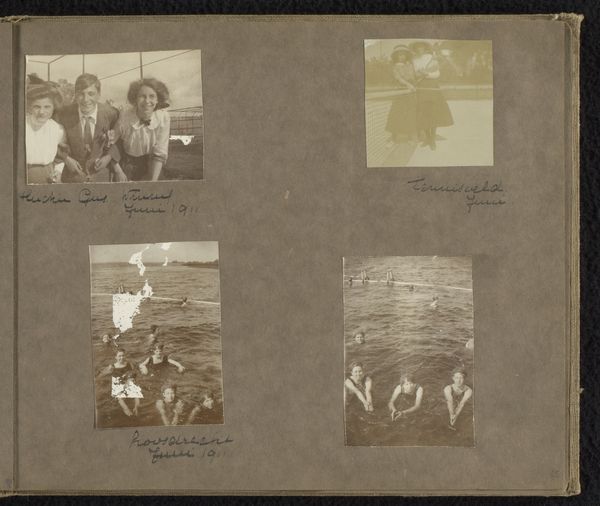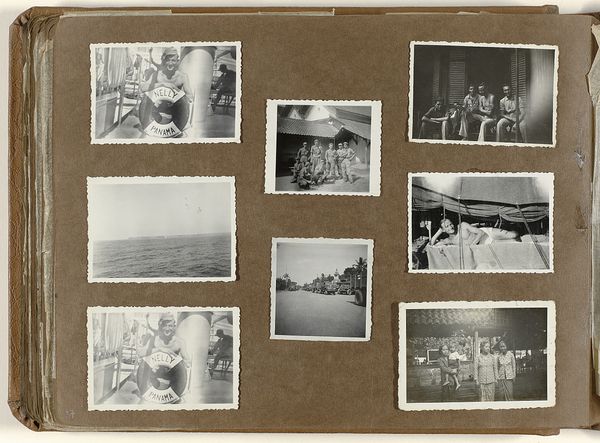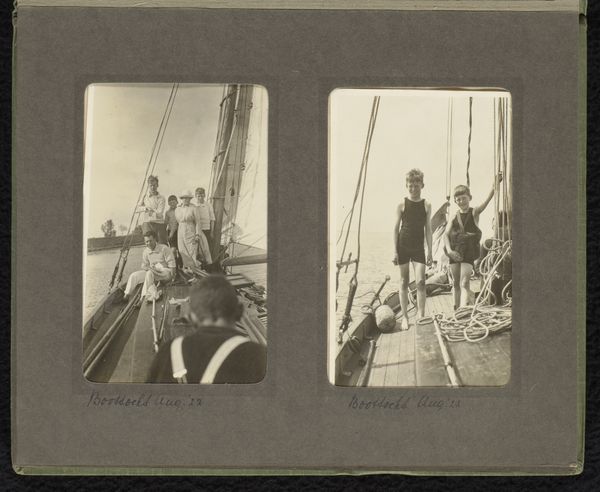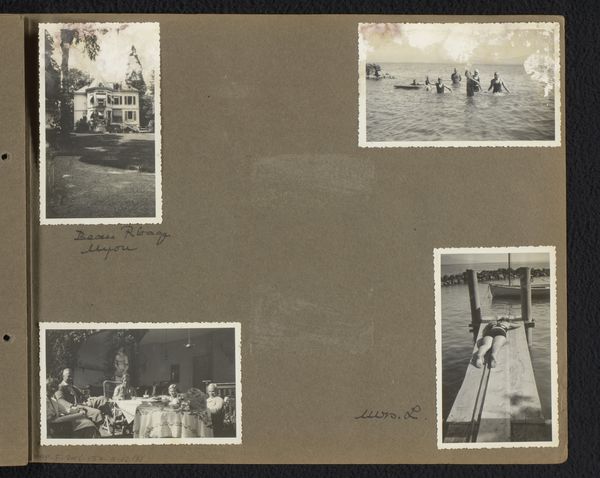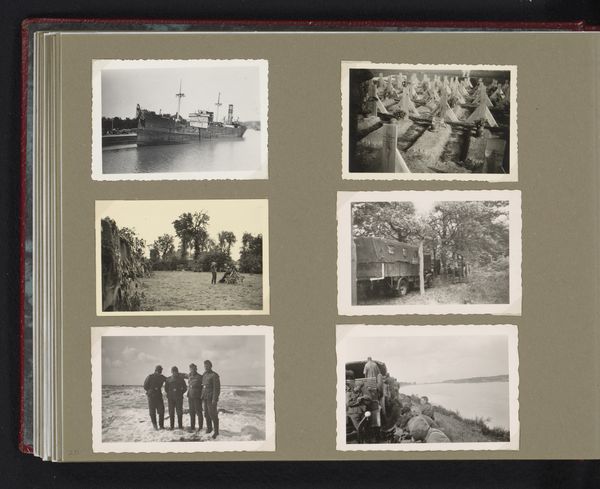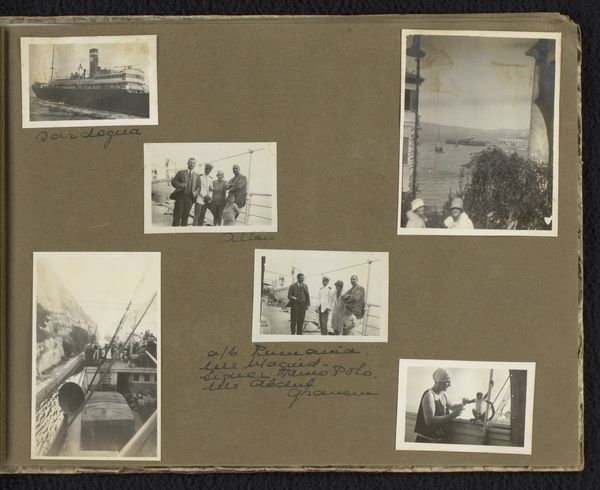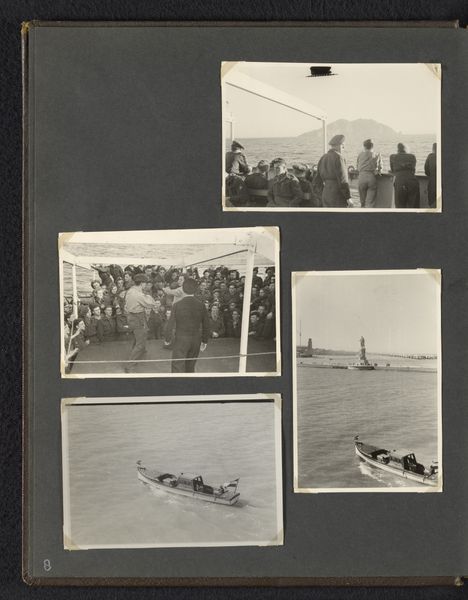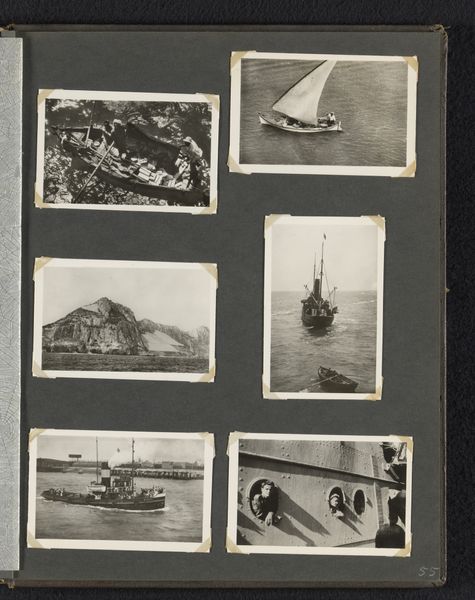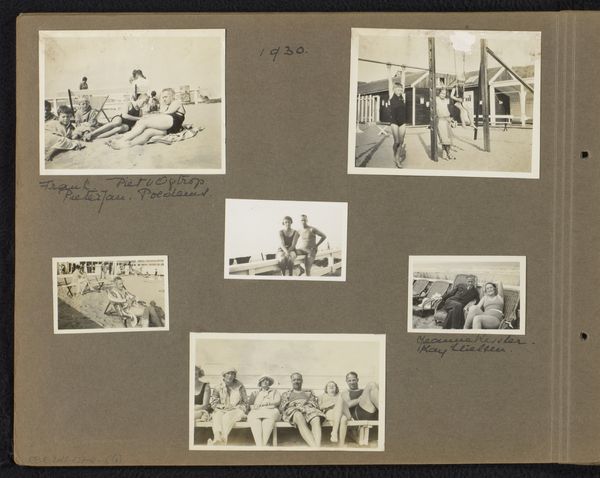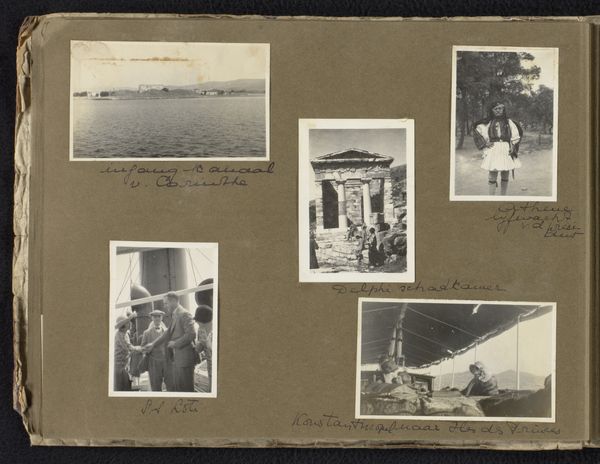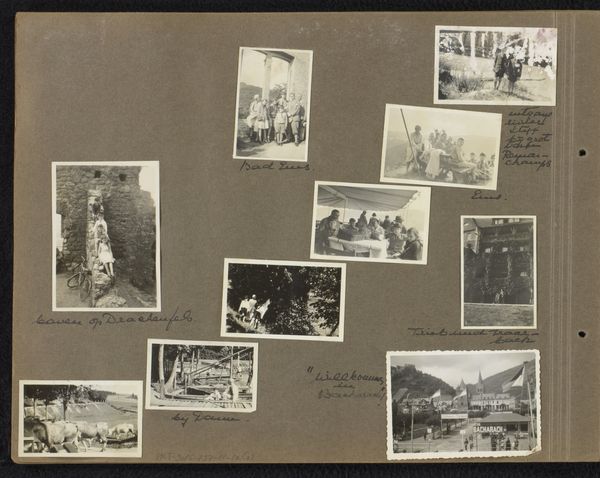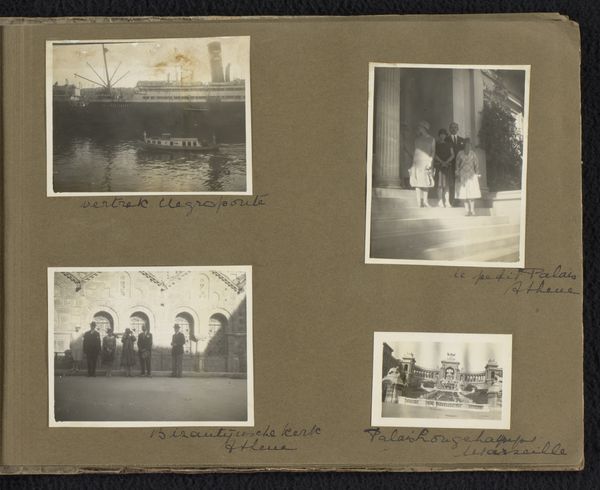
photography, albumen-print
#
pictorialism
#
landscape
#
photography
#
genre-painting
#
albumen-print
Dimensions: height 290 mm, width 387 mm
Copyright: Rijks Museum: Open Domain
Curator: Editor: So this is “Zeiltocht (2)”, a photography piece by an anonymous artist from around 1910 or 1911, printed using the Albumen process. There's a clear interest in documenting different facets of sailing. I am immediately drawn to how the process accentuates the textural contrasts - smooth water, detailed clothing and rigging, which altogether gives the work a layered look and interesting finish. What's your initial impression? Curator: Well, it strikes me first as a collection documenting a specific social context. Albumen prints were popular, enabling mass production, meaning photography became accessible. These scenes of leisure are quite deliberate. Consider how the various photographic vantage points highlight the activity – note the contrast between working and upper class – this highlights how processes are intimately linked with their social frameworks. The use of photography and printing is thus democratizing art. The sailing is of course still exclusive for the portrayed individuals, so what exactly do you think this contrast might convey about those times? Editor: It feels like an attempt to freeze a very specific kind of lifestyle into existence - or perhaps more broadly, that new technologies allow leisure to become a theme, perhaps an object, worthy of art itself. Do you think there’s anything more to be gained by considering what's deliberately *not* captured? Curator: Precisely. It raises questions about visibility and exclusion. The working class who constructed and operated these sailboats; what were the labor conditions, what’s the environmental impact? How does focusing solely on leisure sanitize and rewrite broader socio-economic relations tied to maritime industries, even back then? Editor: I hadn't really thought about that! The way the photograph is created, and how it's circulated becomes almost as important as what it depicts. Thank you, that's an interesting new perspective. Curator: Glad to open new venues! Thinking critically about artistic creation reveals underlying power dynamics. That should serve well when analyzing materials of leisure or of more weighty import.
Comments
No comments
Be the first to comment and join the conversation on the ultimate creative platform.
